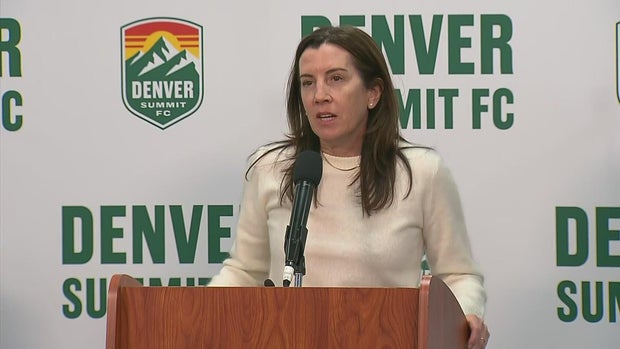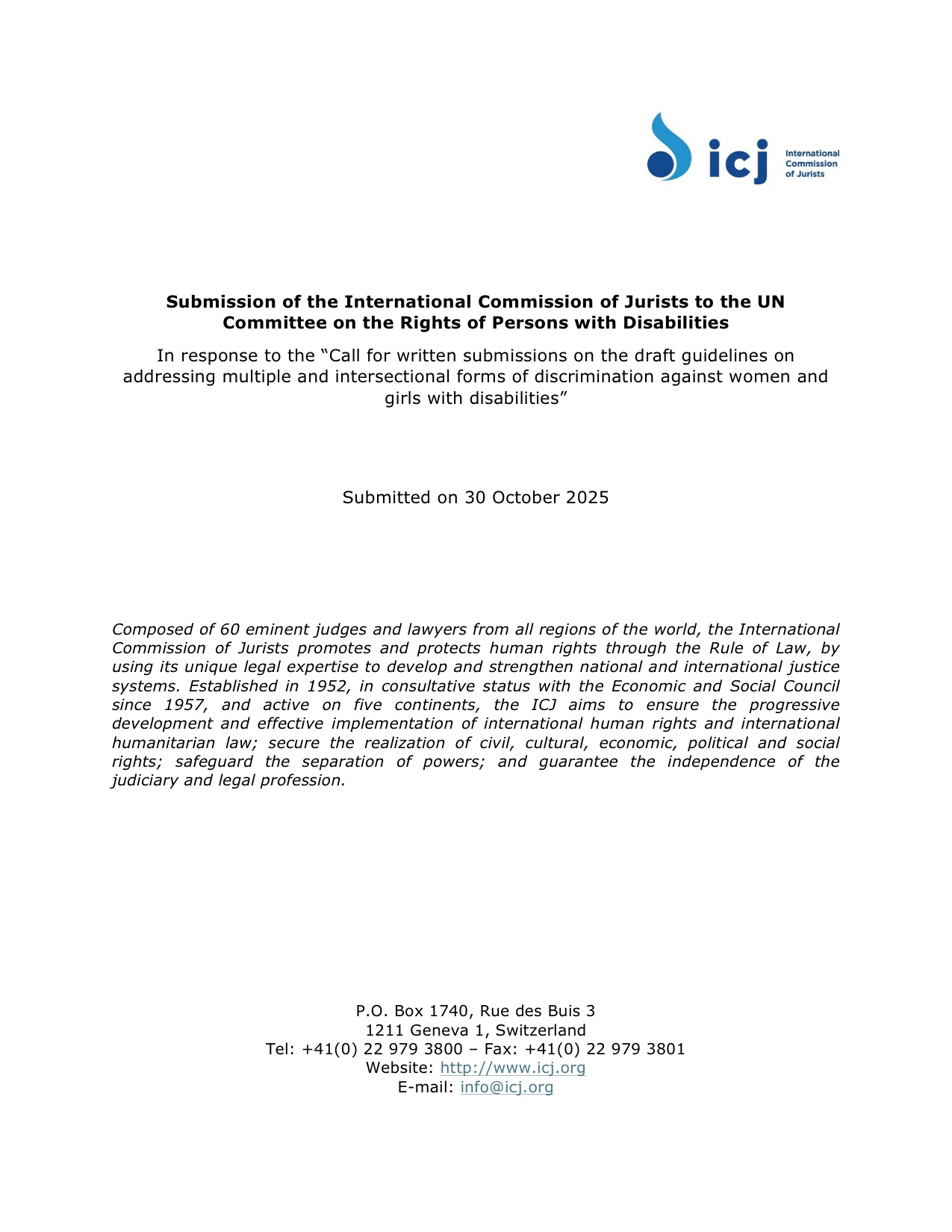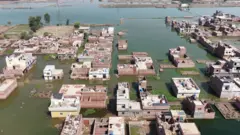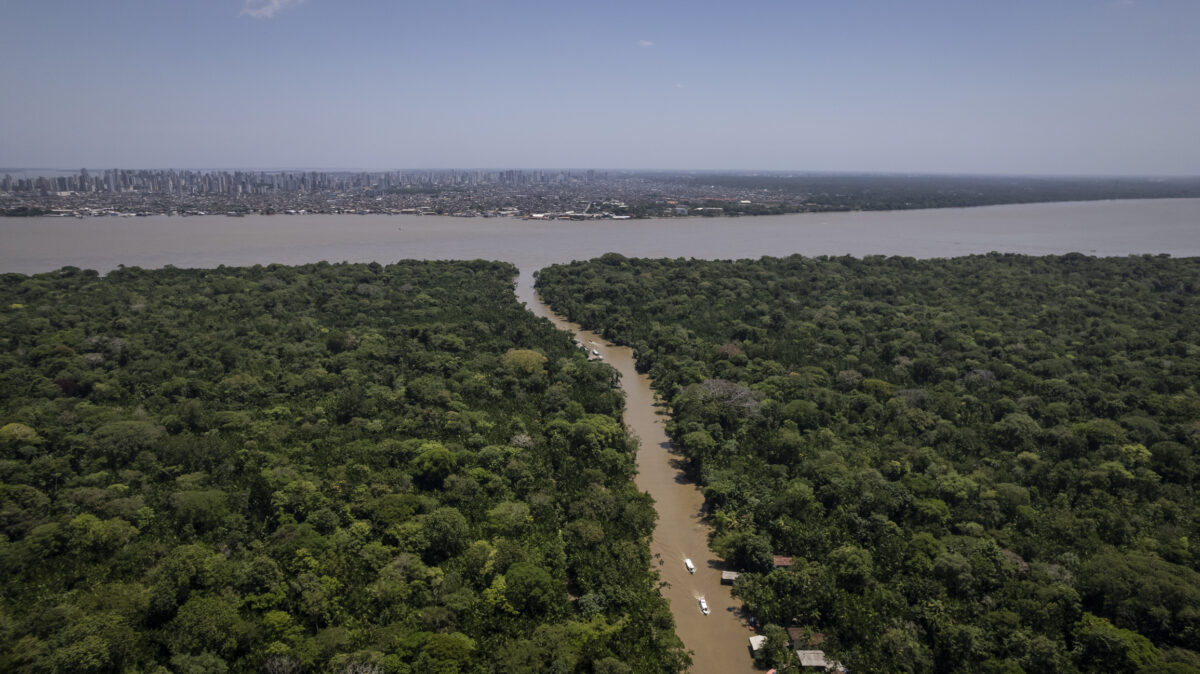Indiana will no longer move forward with its plan to reduce greenhouse gas emissions – WFYI

State of Indiana Halts Climate Action Plan, Shifting Sustainability Burden to Local Governments
Executive Summary
The State of Indiana has officially ceased development of its statewide climate action plan, a decision initiated by an executive order from the Governor’s office. This policy reversal has significant implications for the state’s progress toward several United Nations Sustainable Development Goals (SDGs), particularly SDG 13 (Climate Action). The responsibility for mitigating climate change and advancing sustainability initiatives now largely rests with municipal and local governments, which face systemic limitations without state-level support and coordination.
Policy Reversal and Rationale
Cessation of the Climate Action Plan
The Indiana Department of Environmental Management (IDEM) has been ordered to halt all further work on climate plans developed under federal programs. The directive follows the initial development of a climate plan, which was funded by a $3 million grant from the federal Climate Pollution Reduction Grant (CPRG) program. Key details of the policy change include:
- An executive order from Governor Mike Braun mandated the cessation, citing concerns that federal programs represent “one-size-fits-all policies” that could lead to “worse economic and environmental outcomes.”
- Indiana submitted only its initial climate action plan to the Environmental Protection Agency (EPA) and will not proceed with a comprehensive plan or subsequent status reports as required by the CPRG program.
- Approximately half of the $3 million federal grant will be returned to the EPA.
Impact on Sustainable Development Goals (SDGs)
Setbacks for SDG 13 (Climate Action) and SDG 11 (Sustainable Cities and Communities)
The state’s withdrawal directly undermines efforts to meet SDG 13. Advocacy groups, such as Earth Charter Indiana, warn that this inaction does not alter the physical realities of climate change, including increased flooding, extreme heat, and severe weather events. The burden of building resilience and reducing emissions now falls to local entities, impacting the achievement of SDG 11.
- Shifted Responsibility: The primary challenge of addressing climate change is now delegated to local governments.
- Systemic Limitations: According to Indiana University’s Environmental Resilience Institute, local governments do not control major sources of greenhouse gas pollution, such as large-scale power generation (e.g., coal plants) and transportation systems, which require state or federal intervention.
- Discouragement and Funding Gaps: While many cities remain committed to their climate goals, the loss of potential federal funding and state support is a significant discouragement.
Missed Opportunities for SDG 7, SDG 8, and SDG 9
The abandoned plan represented a pathway toward achieving interconnected goals related to energy, economy, and infrastructure.
- SDG 7 (Affordable and Clean Energy): The plan was expected to facilitate the integration of more clean energy onto the state’s grid.
- SDG 8 (Decent Work and Economic Growth): Proponents argued the plan would have stimulated the green economy by creating new jobs in the renewable energy and sustainability sectors.
- SDG 9 (Industry, Innovation, and Infrastructure): The decision halts a coordinated, statewide strategy for developing sustainable infrastructure, particularly in energy and transportation.
Stakeholder Response and Future Outlook
Perspectives from Advocacy, Academia, and the Public
There is a notable disconnect between the state’s policy direction and the views of various stakeholders.
- Public Opinion: Data from the Yale Program on Climate Communication indicates that approximately 50% of Indiana residents believe the governor and other elected officials should be doing more to address climate change.
- Advocacy Groups: Earth Charter Indiana emphasized that implementing the plan would have improved quality of life and created economic opportunities.
- Academic Institutions: The Environmental Resilience Institute noted that while local efforts continue, the absence of state leadership creates a critical gap in addressing systemic sources of pollution.
The Path Forward: Leveraging Existing Work for SDG 17 (Partnerships for the Goals)
Despite the state’s withdrawal, the initial work on the climate plan retains value. Local governments, businesses, and non-governmental organizations can use the collected data and public feedback to inform their own sustainability efforts. This situation underscores the critical need for strengthened local and regional partnerships (SDG 17) to compensate for the lack of state-level leadership. Future progress may depend on integrating greenhouse gas reduction targets into other state-level programs, such as transportation and infrastructure development, to ensure continued momentum toward a sustainable future.
SDG Analysis of the Article
1. Which SDGs are addressed or connected to the issues highlighted in the article?
- SDG 7: Affordable and Clean Energy: The article mentions that implementing the climate plan would have “put more clean energy on the grid,” directly linking the state’s climate policy to the development of clean energy sources.
- SDG 8: Decent Work and Economic Growth: The article connects the climate action plan to economic benefits, stating that its implementation would have “created jobs,” suggesting a link between environmental policy and economic opportunities.
- SDG 11: Sustainable Cities and Communities: The article heavily emphasizes the role of “local governments” and “cities” in addressing climate change now that the state has withdrawn. It also identifies “cars” as a major source of pollution that cities must contend with, which relates to sustainable urban transport and air quality.
- SDG 13: Climate Action: This is the central theme of the article. The entire text revolves around Indiana’s decision to halt its “climate action plan,” the challenge of “addressing climate change,” reducing “greenhouse gas emissions,” and the consequences of inaction, such as “flood waters,” “extreme weather,” and “extreme heat.”
- SDG 17: Partnerships for the Goals: The article details the breakdown of partnership between the state and federal government, evidenced by Indiana’s withdrawal from the federal “Climate Pollution Reduction Grant” program and the return of funds. It also highlights the shift in responsibility to partnerships between local governments and businesses.
2. What specific targets under those SDGs can be identified based on the article’s content?
- Target 13.2: Integrate climate change measures into national policies, strategies and planning. The article is a direct case study of this target’s failure at the state level. The central event is Governor Mike Braun’s executive order for the Indiana Department of Environmental Management (IDEM) “not to further develop climate plans under federal programs,” effectively halting the integration of climate measures into state strategy.
- Target 11.b: Substantially increase the number of cities and human settlements adopting and implementing integrated policies and plans towards… mitigation and adaptation to climate change. The article points out that with the state’s withdrawal, “the challenge of addressing climate change in Indiana mostly falls to local governments.” It also notes that the “cities she talks to aren’t slowing down their efforts,” indicating that local-level action towards this target is continuing despite the state’s inaction.
- Target 13.1: Strengthen resilience and adaptive capacity to climate-related hazards and natural disasters in all countries. The article implies the need for this target by quoting Shannon Anderson, who states that Indiana’s lack of interest “doesn’t change the flood waters. That doesn’t change the extreme weather. It doesn’t change the extreme heat that we will experience.” Halting the climate plan undermines the state’s ability to strengthen resilience to these hazards.
- Target 7.2: Increase substantially the share of renewable energy in the global energy mix. This target is relevant because one of the stated benefits of the now-halted plan was to “put more clean energy on the grid to serve the growing demand.” This shows that increasing the share of clean energy was a component of the state’s climate strategy.
- Target 17.14: Enhance policy coherence for sustainable development. The article highlights a lack of policy coherence. The governor’s executive order, which contradicts the initial plan developed by IDEM with federal support, demonstrates a clear breakdown in policy alignment between state agencies and between state and federal levels of government.
3. Are there any indicators mentioned or implied in the article that can be used to measure progress towards the identified targets?
- Existence of an integrated national/state climate change strategy: The primary indicator discussed is the “climate action plan” itself. The article explicitly states that Indiana “only sent in the initial climate action plan” and will not submit a “more comprehensive plan” or a “four-year status report,” serving as a clear negative indicator for progress on Target 13.2.
- Amount of financial resources provided to developing countries/sub-national entities: The article provides a specific financial indicator related to partnerships. It mentions the “$3 million grant from the Biden administration” and that IDEM “spent about half of the grant money, the rest will be returned to the Environmental Protection Agency.” This quantifies the breakdown in financial partnership for climate action.
- Reduction of greenhouse gas emissions: This is a core implied indicator. The article discusses the goal of the plan, which was to “tackle greenhouse gas emissions” and “integrate greenhouse gas reductions into other programs.” The major sources mentioned, “coal plants and cars,” point to specific areas where emissions would be measured.
- Public awareness and opinion on climate change: The article directly cites an indicator of public awareness by referencing the “Yale Program on Climate Communication,” which found that “about half of Hoosiers believe the governor, the president and Congress should do more to address climate change.” This serves as a measure of public sentiment and demand for action.
Summary of Findings
| SDGs | Targets | Indicators |
|---|---|---|
| SDG 7: Affordable and Clean Energy |
|
|
| SDG 8: Decent Work and Economic Growth |
|
|
| SDG 11: Sustainable Cities and Communities |
|
|
| SDG 13: Climate Action |
|
|
| SDG 17: Partnerships for the Goals |
|
|
Source: wfyi.org

What is Your Reaction?
 Like
0
Like
0
 Dislike
0
Dislike
0
 Love
0
Love
0
 Funny
0
Funny
0
 Angry
0
Angry
0
 Sad
0
Sad
0
 Wow
0
Wow
0


















-1920w.png?#)






















;Resize=805#)




































